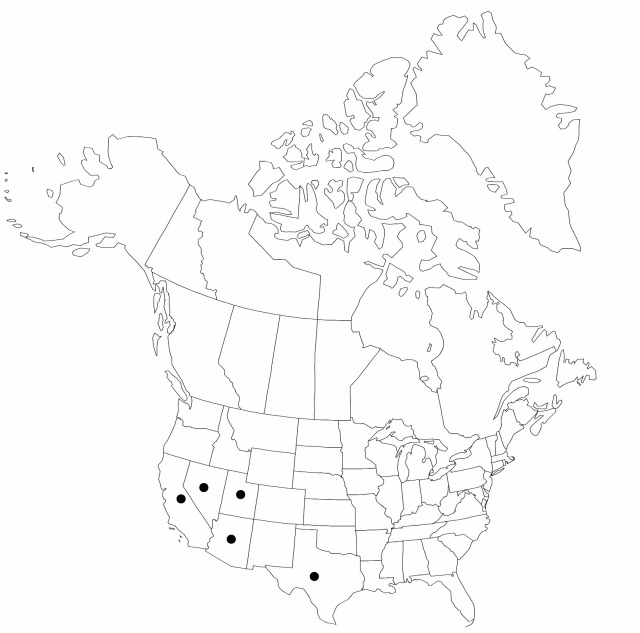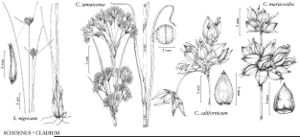Difference between revisions of "Cladium californicum"
in I. Tidestrom and T. Kittell, Fl. Ariz. New Mex., 773. 1941.
FNA>Volume Importer |
FNA>Volume Importer |
Revision as of 21:08, 16 December 2019
Rhizomes to 20 cm × 10 mm. Culms 1–2 m × 5–10 mm. Leaves: blades flat to broadly V-shaped, 1–2 m × 7–10 mm, margins and midvein abaxially harshly scabrous with teeth visible to unaided eye. Inflorescences terminal (or lateral and terminal), pedunculate, peduncle mostly covered by subtending leaf sheath, 30–50 cm; 1st, 2d, 3d, and rarely 4th order branches, branches slightly flexuous. Spikelets in groups of (3–)4–6, ellipsoid to lanceolate, 3 mm; floral scales 5–6, the proximal chestnut brown, ovate to oblong-lanceolate, 2.5–3 × 2 mm, midvein conspicuous, lateral veins weak; stamens 2; anthers 2 mm, connective apices 0.1 mm; styles 1–1.5 mm; stigmas 1–1.5 mm. Achenes purplish brown, ovoid, 1.5–2 × 1 mm, base vaguely 3-lobed, truncate, not flared or discoid, apex acute, persistent style base forming beak 0.2 mm, smooth or irregularly rugulose, glossy. 2n = 36.
Phenology: Fruiting and flowering late spring–summer.
Habitat: Alkaline marshes, swamps, springs
Elevation: 0–2000 m
Distribution

Ariz., Calif., Nev., Tex., Utah, Mexico (Coahuila).
Discussion
Cladium californicum is chiefly differentiated from C. jamaicense by distribution. A detailed investigation of the morphologic differences between the two species would be instructive.
Selected References
None.
